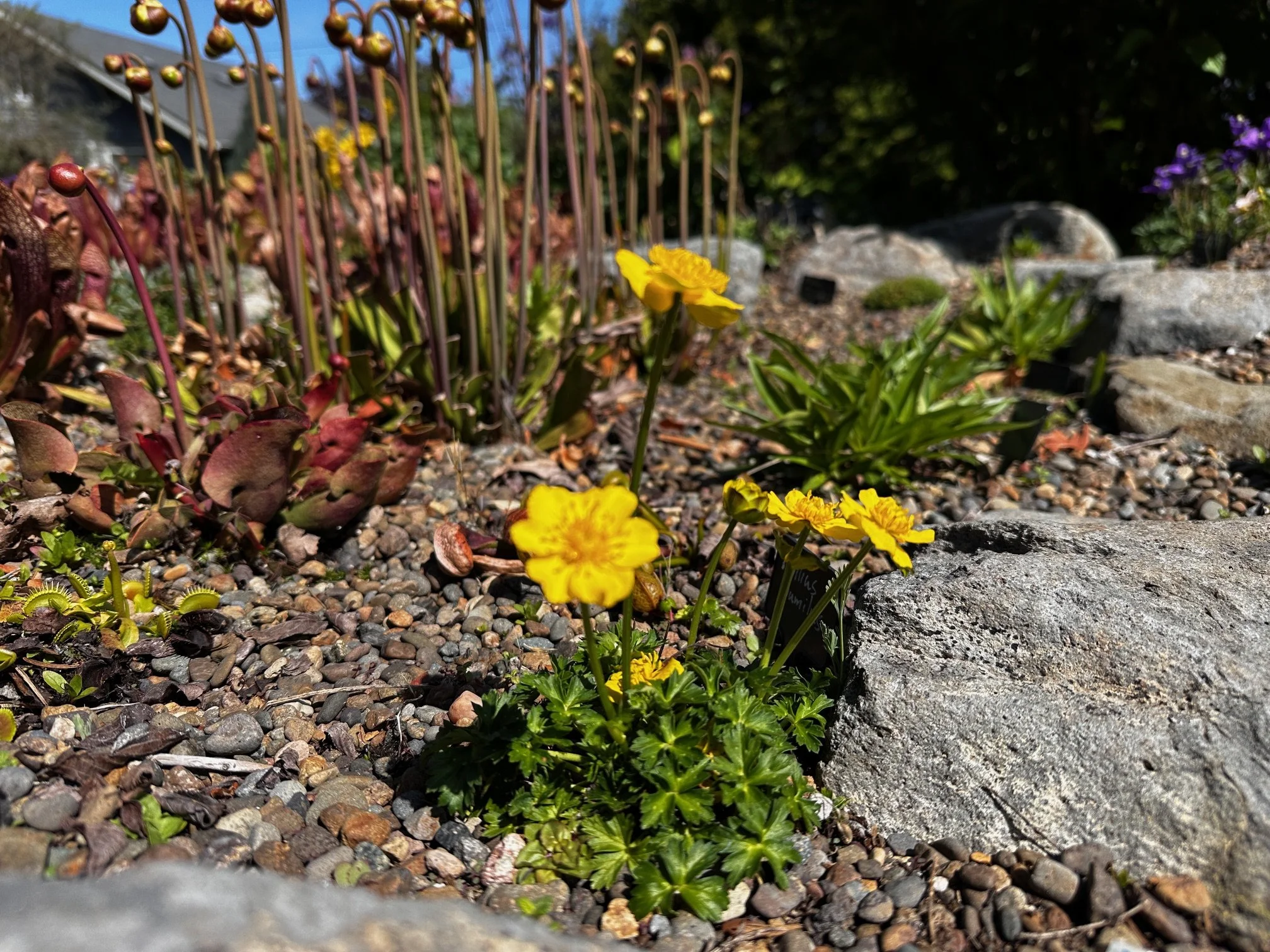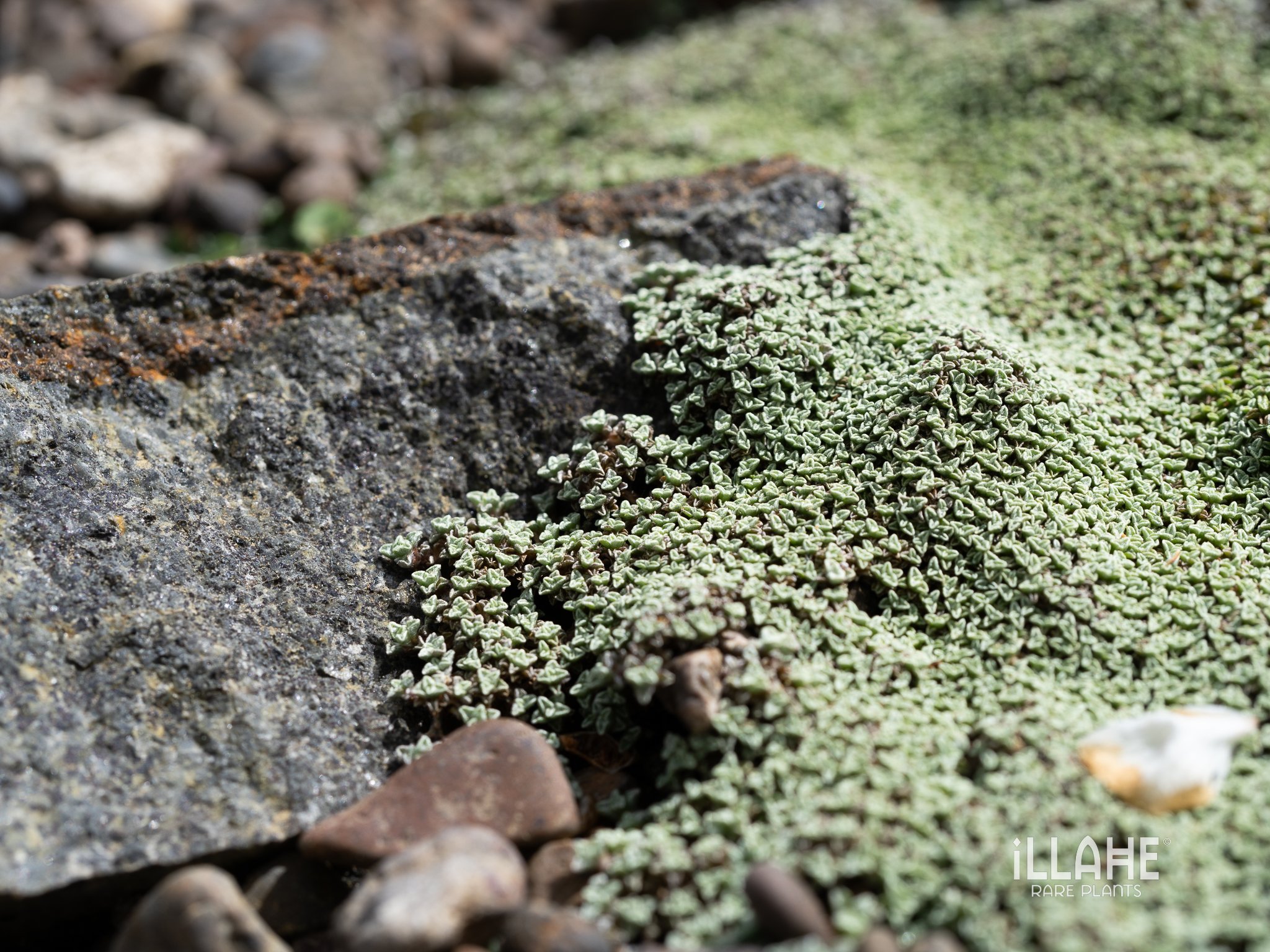
Trollius ranunculoides
A golden treasure of the Eurasian mountains, Trollius ranunculoides is a compact globeflower that lights up alpine meadows and stream margins from Siberia to western China. Unlike its taller European cousins, this species remains low and tidy, often no more than 6–10 inches tall, making it especially well-suited for the rock garden or alpine bed. In the wild it thrives in moist alpine turf, wet seeps, and the edges of snowmelt, where cool summers and constant moisture define its habitat. At illahe it’s growing happily in the peat bog with Sarracenia, willows and gentians.
Rounded, buttercup-like blooms of clear golden yellow appear in late spring to early summer, held above a mound of finely divided green foliage. The flowers, though smaller than those of Trollius europaeus, are produced in abundance and glow brilliantly in the spring sunshine. They are highly attractive to bees, flies, and other alpine pollinators that forage along mountain streams.
In cultivation, Trollius ranunculoides asks for evenly moist, humus-rich soil and thrives best where summers are cool. It is hardy to USDA zone 4 and long-lived once established, though it appreciates protection from drying winds and excessive heat. In a rock garden, it is best placed near a water feature, seep, or in a damp pocket where its natural preferences can be met.
Still uncommon in gardens, Trollius ranunculoides rewards the attentive alpine gardener with a long-lasting display of glowing golden blooms—a true echo of the high mountain meadow
A golden treasure of the Eurasian mountains, Trollius ranunculoides is a compact globeflower that lights up alpine meadows and stream margins from Siberia to western China. Unlike its taller European cousins, this species remains low and tidy, often no more than 6–10 inches tall, making it especially well-suited for the rock garden or alpine bed. In the wild it thrives in moist alpine turf, wet seeps, and the edges of snowmelt, where cool summers and constant moisture define its habitat. At illahe it’s growing happily in the peat bog with Sarracenia, willows and gentians.
Rounded, buttercup-like blooms of clear golden yellow appear in late spring to early summer, held above a mound of finely divided green foliage. The flowers, though smaller than those of Trollius europaeus, are produced in abundance and glow brilliantly in the spring sunshine. They are highly attractive to bees, flies, and other alpine pollinators that forage along mountain streams.
In cultivation, Trollius ranunculoides asks for evenly moist, humus-rich soil and thrives best where summers are cool. It is hardy to USDA zone 4 and long-lived once established, though it appreciates protection from drying winds and excessive heat. In a rock garden, it is best placed near a water feature, seep, or in a damp pocket where its natural preferences can be met.
Still uncommon in gardens, Trollius ranunculoides rewards the attentive alpine gardener with a long-lasting display of glowing golden blooms—a true echo of the high mountain meadow











